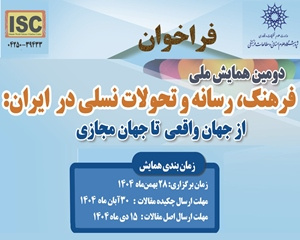ارزش های نسب شناسی خِرد نباتی و رُستن «گیاه کین» در شاهنامه بر مبنای نقد کهن الگویی (مورد کاوی: اسطوره سیاوش و کیخسرو) (مقاله علمی وزارت علوم)
درجه علمی: نشریه علمی (وزارت علوم)
آرشیو
چکیده
رویکرد نقد اسطوره ای، اسطوره شناختی یا کهن الگویی، رویکردی میان رشته ای است که بستری انسان شناختی دارد. کاربرد روش نقد کهن الگویی در بررسی و نقد آثار کلاسیک ادب پارسی به دلیل وجود ژرف ساخت کهن الگویی و شالوده های عمیق اساطیری در آثار حماسی و پیش تاریخی بودن خاستگاه اسطوره ها در شاهنامه فردوسی و برخی آثار حماسی دیگر بسیار پررنگ است. غلبه نقش ناخودآگاه جمعی در این خزائن سترگ اسطوره ای و عرفانی، بن مایه هایی چون تکرار رفتارهای کیهانی، آیین ها، خدایان و عناصر فرا طبیعی، همه و همه به ویژه شاهنامه را متنی مستعد برای واکاوی عناصر کهن الگویی ساخته است. هدف این پژوهش بررسی و تحلیل ارتباط کهن الگویی گیاه و انسان در اساطیر با تکیه به داستان سیاوش و کیخسرو می باشد. این پژوهش با روش توصیفی تحلیلی و با بهره گیری از نقد کهن الگویی از منظر یونگ به واکاوی رموز کهن الگویی و نقد اسطوره ای ارزش های نسب شناسی خِرد نباتی با محوریت داستان سیاوش می پردازد. یافته های پژوهش حاکی از آن است که «گیاه کین» که از خون سیاوش می روید نمادی از کهن الگوی خرد و تبار گیاهی بشر است که در وجود کیخسرو تجلّی می یابد.The Genealogical Values of Vegetative Reason and the Growth of "Kin Plant" in Shānāmeh Based on Archetypal Criticism; The Case Study: The Myth of Siavash and Kei-Khosrow
The approach of archetypal criticism, which has its foundation in anthropology, is interdisciplinary in nature. This method is particularly prominent in the study of epic works, such as Ferdowsi's Shānāmeh, due to the deep-rooted archetypes and mythological foundations present in these texts. The collective unconscious plays a dominant role in great mythological and mystical works, as evidenced by the presence of motifs such as the repetition of cosmic processes, rituals, gods, and supernatural elements. As a result, these texts, and particularly Shānāmeh, are highly suitable for the analysis of archetypal elements. The purpose of this research is to investigate and analyze the archetypal connection between plants and humans in myths, specifically focusing on the stories of Siavash and Kei-Khosrow. This research employs a descriptive-analytical method and utilizes Jung's critique of archetypes to analyze the archetypal and genealogical aspects of the vegetative reason. The findings of this research indicate that the "Kin plant" (coral plant or Erythrina corallodendron) that grows from Siavash's blood is a symbol of the archetype of human reason and plant descent of man, which is manifested in the existence of Kei-Khosrow.








